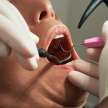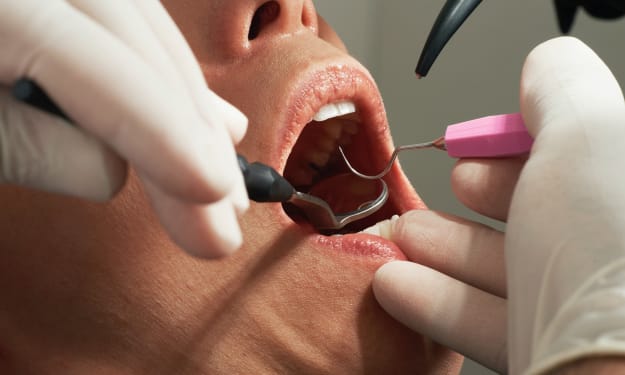
Introduction:
A radiant smile is often considered a universal symbol of beauty, confidence, and happiness. However, achieving that perfect smile may not come naturally to everyone. Fortunately, orthodontics, a specialized field of dentistry, has emerged as a solution for dental irregularities and misalignments. In this article, we will explore the crucial role that orthodontics plays in dental health. From understanding the basics of orthodontics to exploring various treatment options and discussing the long-term benefits, we will delve into how orthodontics can help individuals achieve a beautiful smile while improving their overall oral health.
Understanding Orthodontics:
Orthodontics is a branch of dentistry that focuses on diagnosing, preventing, Gum disease and treating dental irregularities, particularly those related to the alignment of teeth and jaws. Orthodontists are dental specialists who undergo additional training beyond general dentistry to acquire expertise in correcting malocclusions, bite problems, and jaw abnormalities.
Common dental irregularities addressed by orthodontists include overcrowded teeth, gaps between teeth, overbites, underbites, crossbites, and open bites. These issues can impact both the aesthetics and functionality of the teeth and jaws. Orthodontists use various diagnostic tools, such as X-rays, photographs, and dental impressions, to assess the condition and develop personalized treatment plans.
Importantly, orthodontic intervention is not limited to cosmetic purposes. By addressing dental irregularities, orthodontics plays a crucial role in improving oral health, speech, and overall well-being. Additionally, early orthodontic intervention can help prevent more severe problems in the future, potentially reducing the need for complex treatments or surgery.
Orthodontic Treatment Options:
Orthodontic treatments have evolved significantly over the years, providing patients with a range of options to address their dental irregularities. The choice of treatment depends on the severity of the issue, patient preferences, and the orthodontist's recommendation. Here are some common orthodontic treatment options:
1. Traditional braces: Traditional metal braces consist of brackets, wires, and bands that work together to gradually shift teeth into proper alignment. They are highly effective and suitable for various dental issues.
2. Clear aligners: Clear aligner systems, such as Invisalign, offer a discreet alternative to traditional braces. These custom-made, transparent trays gradually move the teeth into position. Clear aligners are removable, allowing for easier oral hygiene maintenance and no dietary restrictions.
3. Lingual braces: Lingual braces are similar to traditional braces but are attached to the backside of the teeth, making them virtually invisible from the front. They are an excellent choice for individuals who desire discreet treatment.
4. Orthodontic appliances: Apart from braces, orthodontists use other devices like expanders, headgear, and retainers to correct specific issues. Expanders help widen the upper jaw, while headgear aids in modifying the growth and alignment of the jaws. Retainers are essential for maintaining the achieved results after the active treatment phase.
The Benefits of Orthodontics
Conway House Dental Practice provide Orthodontics in High Wycombe wich include wide range of benefits beyond simply achieving a straight smile. Let's explore the advantages of orthodontic treatment:
1. Aesthetic advantages: Orthodontics enhances facial aesthetics, boosts self-confidence, and improves the overall harmony of the face. A beautiful smile can positively impact personal and professional relationships.
2. Enhanced oral health: Properly aligned teeth are easier to clean and maintain, reducing the risk of dental issues such as tooth decay and gum disease. Straight teeth also minimize the chances of uneven wear and tear, reducing the need for extensive restorative treatments later in life.
3. Functional improvements: Orthodont
ic treatment can correct bite problems, such as overbites and underbites, improving chewing and speech capabilities. Additionally, it can alleviate jaw joint pain and discomfort caused by misaligned teeth and jaws.
4. Long-term impact: By addressing dental irregularities early on, orthodontic treatment can prevent more severe problems in the future, such as tooth loss, gum recession, and jaw abnormalities. It contributes to overall dental health and longevity.
Advancements in Orthodontics:
Advancements in technology and treatment techniques have revolutionized the field of orthodontics, providing patients with more efficient and comfortable treatment experiences. Here are some notable advancements:
1. Digital orthodontics: Advanced imaging technologies, such as 3D scanning and modeling, enable orthodontists to create precise treatment plans tailored to each patient's unique needs. Digital models also facilitate the fabrication of customized aligners and appliances.
2. Accelerated orthodontics: Techniques such as high-frequency vibration and micro-osteoperforation are used to expedite tooth movement, reducing the overall treatment duration. This is particularly beneficial for individuals seeking faster results.
3. Surgical orthodontics: In complex cases involving severe misalignments or skeletal discrepancies, orthodontic treatment may be combined with oral surgery to achieve optimal results. This multidisciplinary approach ensures comprehensive correction of the dental and skeletal structures.
4. Invisible orthodontics: Clear aligners and lingual braces offer discreet treatment options. Clear aligners are virtually invisible and can be removed for special occasions, while lingual braces are placed on the backside of the teeth, making them hidden from view.
Orthodontics for Different Age Groups:
Orthodontic treatment is not limited to a specific age group. Orthodontists provide appropriate solutions for individuals of all ages. Here's a breakdown of orthodontics for different age groups:
1. Orthodontic treatment for children: Early intervention during childhood allows orthodontists to guide jaw growth and correct developing dental issues. Treatments like expanders help create sufficient space for permanent teeth, avoiding future complications.
2. Teenagers and braces: Adolescence is a common time for orthodontic treatment. Traditional braces, clear aligners, or lingual braces can effectively address misalignments during this phase of dental development.
3. Adult orthodontics: Many adults seek orthodontic treatment to address long-standing dental irregularities or relapse from previous orthodontic work. Advancements in discreet treatment options, such as clear aligners, have made orthodontics more appealing to adults.
Choosing an Orthodontist
Selecting the right orthodontist is crucial for a successful and satisfying treatment journey. Consider the following factors:
- Qualifications and certifications: Ensure that the orthodontist has completed an accredited orthodontic residency program and is a member of professional organizations.
- Experience: Look for an orthodontist with experience in treating similar cases.
- Consultations: Schedule initial consultations to evaluate the orthodontist's approach, communication style, and treatment plan.
Maintaining Results after Orthodontic Treatment:
After active orthodontic treatment, a retention phase follows to maintain the achieved results. This typically involves wearing retainers as prescribed by the orthodontist. Good oral hygiene practices, including regular brushing, flossing, and dental visits, are essential for maintaining oral health. Patients should also follow lifestyle considerations such as a balanced diet and avoiding habits that could adversely impact dental alignment.
Conclusion:
Orthodontics plays a vital role in achieving a perfect smile while improving overall dental health. By understanding the basics of orthodontics, exploring treatment options, and considering advancements in the field, individuals can make informed decisions to embark on a transformative orthodontic journey, ensuring a lifetime of confident smiles and oral well-being.






Comments
Sam Smith is not accepting comments at the moment
Want to show your support? Send them a one-off tip.